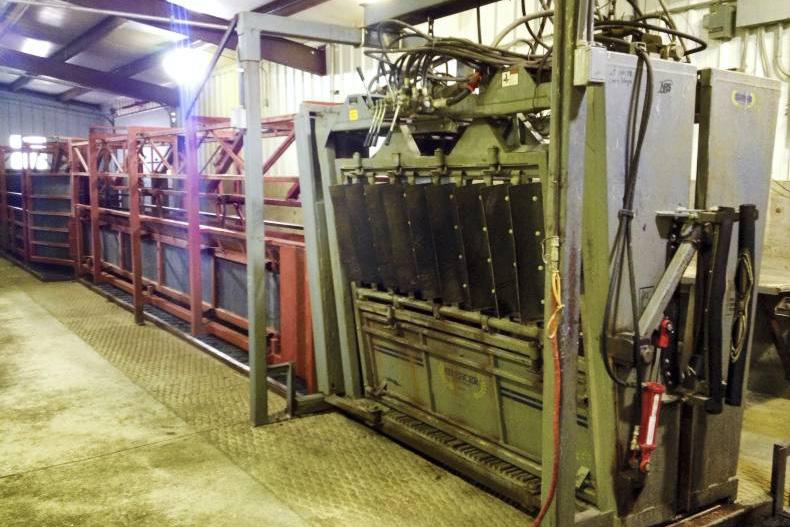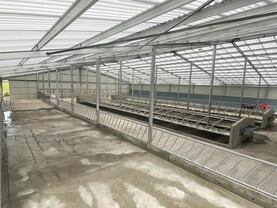Recently, the Irish Farmers Journal visited Darr feedlot in Central Nebraska. Darr has a capacity to hold 40,000 head of cattle and has a throughput of 104,000 head each year.
The entire feedlot was very impressive but one of the highlights had to be the handling and drafting unit, which was erected in 2008. Here are some of the key features of the system.
Picture one
The hydraulic cattle squeeze at the front of the crush catches the eye when you walk into the shed – an engineer’s work of art. Known as a silencer shoot because of the ease and quietness with which it can adapt to a number of situations, such as immobilising cattle of different sizes or catching an animal’s head.
The hydraulic side plates allow the bottom of the crush to close inwards. This enables the operator to work with all sizes of cattle by just the movement of one lever. “You can work 2,500lb (1,134kg) steers one minute or baby calves the next minute, that fast” explains John Schroeder, manager of Darr Feedlot Inc.


Picture two (above left)
The head bail is also powered by a hydraulic system, which works in a scissor motion. Once the animal is restrained, its electronic tag is scanned with a wand. All known data for the animal is shown on the computer and its current weight is recorded automatically.
Picture three (above right)
Among the most interesting things to see in action were the louvers at the side of the unit. These are the blank angled silencer blinds along the side which prevent the animals from seeing humans in their flight zone when they enter the shoot, helping reduce the hesitation of the animals.These louvers can be opened in four different areas on both sides to allow access to an animal for injections and other treatments.

Picture four and five
Picture four shows the chute leading into the cattle squeeze. Again, this is all hydraulically powered to allow cattle of different sizes to be worked at one time. It reduces in width to suit the animal’s size and the upper bar drops down to prevent cattle rising. One of the best designs of the system is the non-back bar (picture four inset). As the cattle move under the bar it drops behind them and doesn’t allow any further movement backwards.
John explains “they can’t jump up because of the bar overhead, they can’t back up, there is no noise with all the rubber so cattle tend to be really calm. It’s very open both left and right so they don’t feel confined.”
Picture five (below left) clearly shows how open the back of the shoot is where the cattle enter. Darr have two lines running in together before reducing to one again to help keep the animals relaxed.


Picture 6 (above right)
With up to 1,600 head a day passing through the chute to be sorted into appropriate groups according to weight and sex, an easily run drafting system is essential.
At Darr, the information the electronic tag feeds back through the computer allows parameters to be set up to automatically divide the cattle by sex, weight or testing group. Heifers over 800lb, heifers under 800lb, steers over 800lb and so on can be drafted automatically to one of eight outside pens once they leave the chute.

Figure 1
Here we see the simple design of the collecting yard at the rear of the chute. This design is called a Bud box after its developer Bud Williams, a stockman in Texas. The concept is quite simple – cattle want to return to where they came from. After cattle enter the bud box, the gate is latched behind them and they circle to go back out the same way they came in (towards the light also), thus calmly running them up one of the two chutes. John commented that the only time there would be any bit of trouble with the system is when there are too many cattle to fit in the box.
Cost
The main silencer crush where the cattle are worked came in at $19,000 while an additional $18,000 was paid for the hydraulic chute. Overall cost inclusive for the building, hydraulic drafting system, bud box and the extensive penning outside, came in at around $260,000 (€236,000).
While John agrees this is a large amount of money, he explains Darr run such big numbers every year a smoothly run operation is a must.






 This is a subscriber-only article
This is a subscriber-only article


















SHARING OPTIONS: